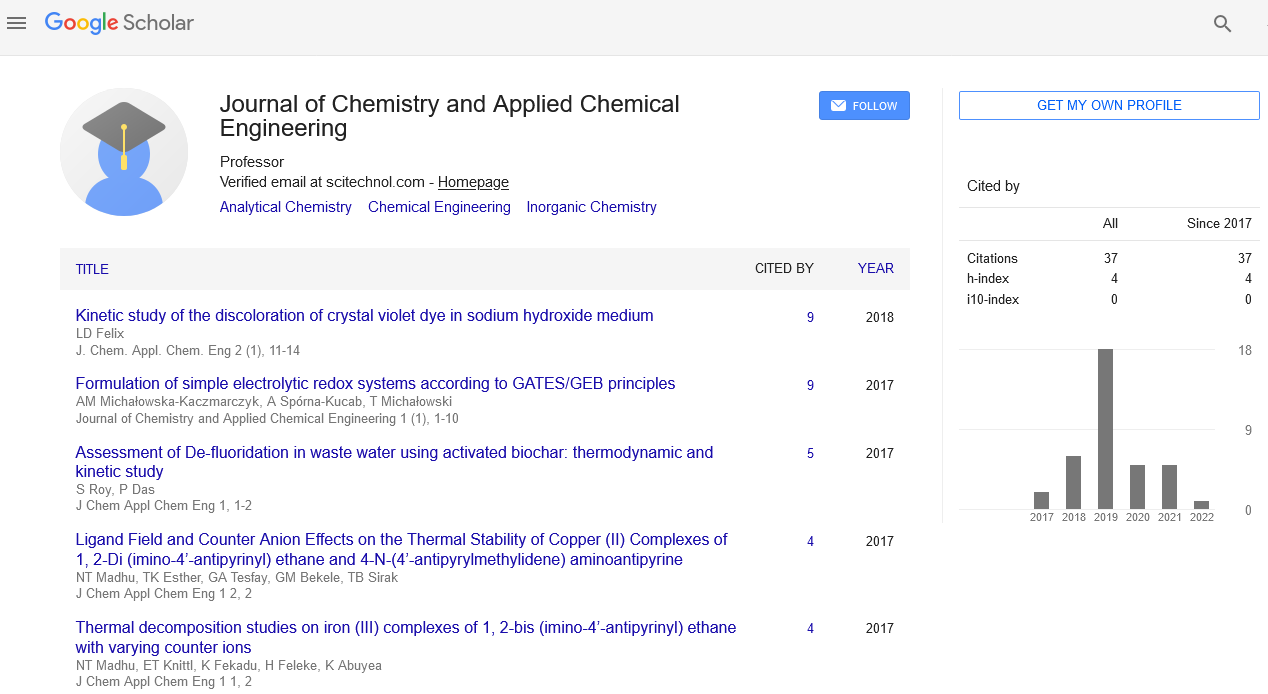Distributions of nicotine and cotinine in rat plasma, tooth, alveolar bone and brain from long-tern passive smoking rats and their impacts on dental health
Yong-Xi Li
Medpace Bioanalytical Laboratories, USA
: J Chem Appl Chem Eng
Abstract
Smoking and passive smoking on the earth are very common phenomena which make our world and environment not clean and not green. Based on previous experimental work on Rat by intraperitoneal injection of nicotine, a new designed rat tests are carried out. 30-40 rats were tested in a box in which commercial cigarettes were burned continually for 3 months as passive smokers. At the end of each month (1, 2 and 3 months), some rats were sacrificed, then, samples for plasma, brain, teeth bone, alveolar bone and Shin bone were collected for the analysis of concentrations of Nicotine and Cotinine. For plasma and brain homogenized samples, protein precipitation extraction by Acetonitrile, and further clean up by PEP 96 well micropates were used prior to quantitation analysis on Sciex 5500 triple quadrupole LC-MS/MS system. For bone tissue, ground bones were dissolved in HCl overnight. After dissolved samples were neutralized, the liquidized bone samples were loaded on the same SPE microplate for extractions of nicotine and cotinine, as well as added their deuterated internal standards. The chromatographic separation was achieved on C18 column (100 × 2.1 mm) with gradient operation. The MRM transitions on +ESI mode were monitored at m/z 163.1  130.1 for nicotine, m/z 177.1  80.1 for cotinine. Calibration range was from 0.5 ng/g to 100 ng/g for all bones, 0.5 ng/mL to 100 ng/mL for plasma and brain. Preliminary results have shown that 1) In plasma: T1/2 could be as long as 2-3 months and clearance periods are very long without decay which showed typical characteristic of a chronic drug; and Cmax of Nicotine for such passive smoking rats is around 1 month, and metabolite of Cotinine: 2 months. Due to long residuals in blood which flow into entire body that will cause long term damage for all organs. 2) In Brian: Basically, the same periods of T1/2 and Cmax as in plasma observed. However, an important difference is that base constant high levels of nicotine and cotinine lasted for a long period of time even till another 64 days after passive smoking stopped. 3) Acumination of Nicotine and Cotinine in bone tissues had order of Alveolar bone > Tooth>Shin bone. It can be understood that, for Alveolar bone, acumination can come from two sources: from blood, and from tooth adsorption. These can cause surround tissue damaged and enhancements of the toxicity of periodontal anaerobes by cotinine and nicotine. From above studies, we need to improve our environment to green.
Biography
Yong-Xi Li has completed his educations in Beijing Institute of Petroleum Research in China and Postdoctoral training at Cornell University, USA. Currently he is Executive Director at Medpace Bioanalytical Laboratories focusing on bioanalytical analysis, including TK, PK, ADA and Nab method developments, validations and sample analysis for small molecule, polypeptides, and protein and antibody therapies. He has published more than 150 papers and one book in reputed journals and publishing house and serving as organization committee and Keynote speaker for several biotech conferences.
E-mail: y.li@Medpace.com
 Spanish
Spanish  Chinese
Chinese  Russian
Russian  German
German  French
French  Japanese
Japanese  Portuguese
Portuguese  Hindi
Hindi 